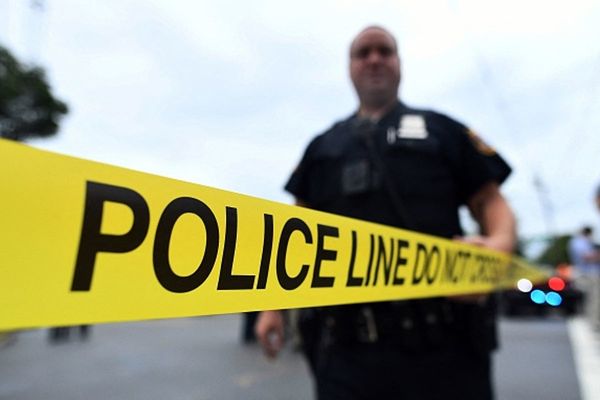"I should like, from these benches, to welcome this bill and to express our hope that Trinidad and Tobago as a new state will have a successful voyage into the future.” – Lord Ogmore, July 16, 1962.
This was Lord Ogmore on July 16, 1962, as the House of Lords discussed the Trinidad and Tobago Independence Bill, which granted the nation its independence effective from August 31, 1962.
From being a Crown colony – completely controlled from London with no domestic legislature – to a republic within the Commonwealth, the Caribbean nation went on a gradual journey of self-governance before freeing itself from Britain.
What were the key events that led to independence?
There are several important events throughout the first half of the 20th century before it became universally accepted on both sides of the Atlantic that Trinidad and Tobago should be an independent country.
Dr Ben Gowland, a lecturer in human geography at the University of Oxford, studied the Black Power movement in the West Indies for his PhD research and subsequently became well-versed in the nation’s path to independence.
He explained a major appetite for it began prior to the First World War.
Gowland said: “You get the emergence of a number of middle-class reform movements and these are largely concerned with advancing the interests of an emerging middle-class in Trinidad and Tobago. These would be colonised people, black and East Indian, who were teachers and lawyers etc.
“They wanted to break down barriers to attaining government positions, that sort of thing.
“A city council was established in the early 1900s and these reform movements were concerned with getting seats on that, for example. Trinidad was a Crown colony, directly ruled from London, which was not the case in some other Caribbean nations, so this was an early example of democratising Trinidad.”
The next big moment came after the First World War when major demonstrations grew out of economic depression, combined with soldiers coming home who had been radicalised because of poor treatment in the British Army.
Out of that a Royal Commission was signed that delivered a legislative council in 1925 and a limited vote. It had seven elected positions out of 13, with the rest appointed by a British governor.
“It was not fully democratic but better than before,” said Gowland.
“The vote was restricted to men over 21 and women over 30. There are property, income and literacy requirements, so it was very restrictive, but there was limited emergence of electoral democracy.”
After another major labour rebellion in 1937, the Moyne report produced by the British Government led to universal suffrage and self-rule in Trinidad and Tobago, with a locally elected government.
Gowland went on: “Everyone outside of the white planters wants to move towards independence. The British government wanted to get rid of the West Indies colonies too.
“So it’s basically happening throughout the 1950s and the question is what shape is it going to take.”
Trinidad and Tobago officially became independent on August 31, 1962, an event which was celebrated with a week of festivities and is still marked to this day with military-style parades.
Politics during and after independence
The main political party during the lead-up to independence was the People’s National Movement (PNM), set up in 1956 by Eric Williams, who would go on to be the dominant political figure on the islands until his death in 1981.
Gowland said: “In the 50s he’s involved in the anti-colonial movement in Trinidad so he gives public lectures and goes off and works in Europe and returns to Trinidad in 1956 and resolves to lead the island to independence.”
The PNM won the first local election in 1956 and every subsequent one for the next 30 years.
Asked if there were any concerns about the island becoming independent, Gowland said it was broadly accepted it would happen, but there were debates about what it would look like.
“As Williams had been educated in Britain, he wasn’t [seen as] a radical necessarily,” said Gowland.
“He wasn’t going to nationalise loads of industries, he was still willing to work with the foreign-owned firms.
“The oil workers wanted to nationalise the oil industry and kick British and American corporations out.”
There was also a lot of tension around Trinidad’s involvement in the West Indies Federation, an alliance that briefly popped up in the late 1950s. The original plan was for the Caribbean islands, including Trinidad and Tobago, to become independent collectively as a single state, but this quickly collapsed due to internal fights.
“There was arguments about that - should Trinidad be part of this bigger federation or should it go it alone?” said Gowland.
There was also a lot of conflict in the aftermath of independence between the government and trade unions who wanted British and American-owned firms out of the country.
Gowland added: “People were thinking ‘we’re independent politically, but does that mean anything if the economy is still dominated by these foreign companies?’”
The monarchy
The Queen remained head of state for several years after independence until 1976. Two years before this, a constitutional reform commission recommended the country become a republic in line with national opinion. When the new constitution was adopted, a president became the head of state.
Trinidad and Tobago remains a member of the Commonwealth.
Currency and the central bank
Trinidad and Tobago has used many currencies over the years due to the occupation of the island by colonial powers. Upon occupation of Trinidad, the British encountered a rudimentary system devoid of banks and bank notes.
According to the website of the Central Bank of Trinidad and Tobago, the establishment of the Colonial Bank in 1834 – which issued notes in sterling – led to those notes being the main form of currency for many years.
In 1951 a regional currency authority, the British Caribbean Currency Board, was introduced and it granted sole rights to the member countries for the issue of notes and coins of the new unified currency. Between 1954 and 1957, the first British Caribbean notes were issued.
In 1964, the British Caribbean Currency Agreement was signed to facilitate arrangements for an independent Central Bank, which was established by an Act of Parliament. Today, the Trinidad and Tobago dollar is issued by the central bank, with all British money and British West Indies dollar having ceased to be legal tender in 1967.
Lessons for Scottish independence: Trinidad and Tobago was once completely controlled by Britain and, much like Scotland, went on a gradual path towards self-governance, gaining more powers until eventually, independence became inevitable. The desire for it was what the overwhelming majority of people wanted and the British government couldn’t really refuse, perhaps showing that with patience - whilst keeping the noise and activism up - it could become inevitable for Scotland too.







